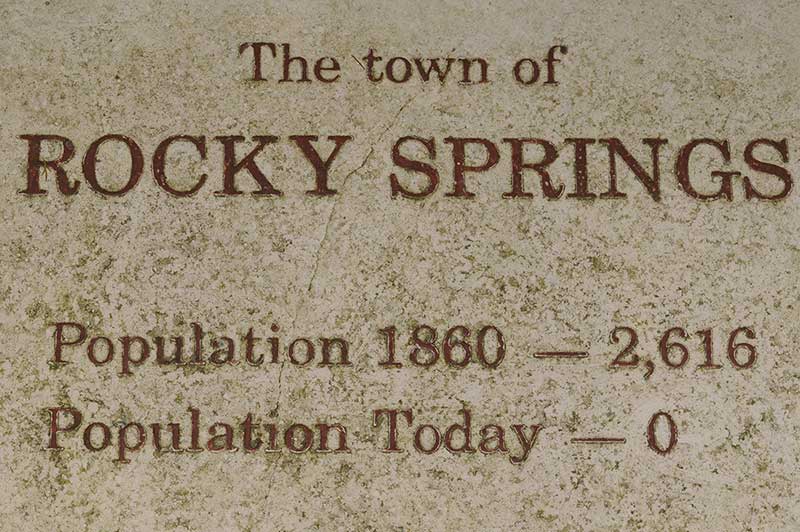Rocky Springs, MS Vol. 2, No. 27

Rocky Springs, MS
Ghost Town
As the plaque indicates, Rocky Springs, MS was a thriving town in 1860, but today it’s a ghost town. You can find its remains on the west side of the Natchez Trace, about 20 miles north of Port Gibson. Why is a Mississippi ghost town being featured in a newsletter devoted to insects, and what happened to cause Rocky Springs to become a ghost town? It wasn’t Ulysses S. Grant.
Rocky Springs became a ghost town because of two different insect pests, yellow fever mosquitoes and boll weevils. Another plaque at the site explains: “Although Rocky Springs tried to recover after the yellow fever epidemic of 1878, in the early 1900s, the boll weevil struck, devastating the cotton crop. After this final disaster, the population declined rapidly and the last store in the area closed its doors during the 1930’s.” Rocky Springs just could not survive this double whammy of insect-related disasters.
Ironically, neither of the two insects that caused the demise of Rocky Springs occur in the state today. Boll weevils have been eradicated from Mississippi since 2008, and yellow fever mosquitoes are no longer common. In fact, according to Extension Medical Entomology Specialist, Dr. Jerome Goddard, as well as officials at the Mississippi Department of Health, yellow fever mosquitoes, Aedes aegypti, have not been detected in the state since the 1980’s. Maybe there are still a few around, but they are not showing up in the mosquito surveys routinely conducted by the Department of Health.
This is good news because Aedes aegypti is the primary vector of Zika virus in many parts of the world. However, Dr. Goddard also points out that the Asian tiger mosquito, Aedes albopictus, a non-native mosquito that has been in the US for about three decades, is widely distributed in Mississippi and that this day-biting mosquito is also a potential vector of Zika virus.
But this article is not really about Zika virus; it’s about the potential economic impact of insect pests. In some cases it can be significant. How significant? Just find a resident of Rocky Springs and ask them.
See Extension Publication 2699, Identification Guide to Adult Mosquitoes in Mississippi, http://extension.msstate.edu/sites/default/files/publications/publications/p2699_0.pdf for more information on mosquitoes and mosquito-borne diseases. This publication includes technical keys for identification of adult females of the 60+ species of mosquitoes that occur in the state.
See Extension Publication 2294, The Boll Weevil in Mississippi, Gone but Not Forgotten, for more information on boll weevils and boll weevil eradication.
http://extension.msstate.edu/sites/default/files/publications/publications/p2294.pdf.
Blake Layton, Extension Entomology Specialist, Mississippi State University Extension Service. The information given here is for educational purposes only. Always read and follow current label directions. Specific commercial products are mentioned as examples only and reference to specific products or trade names is made with the understanding that no discrimination is intended to other products that may also be suitable and appropriately labeled.
Sign up to receive Bug's Eye View.

